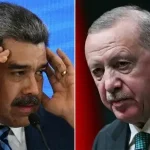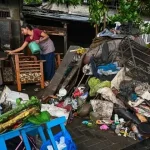LAHORE: On Thursday, the Punjab administration led by Maryam Nawaz Sharif unveiled her first budget, which included an unprecedented annual development plan (ADP) worth Rs842 billion.
This figure includes a foreign aid component of Rs106.167bn and is 28 per cent higher than the previous year’s Rs655bn.
Finance Minister Mujtaba Shuja emphasized in his budget address that the government’s “revolutionary” five-year aims are reflected in the ADP’s 100% cash cover. Thirty percent of the ADP is set aside for special initiatives and other programs, with the remaining thirty percent going toward production, twenty percent going toward infrastructure, and five percent going toward the social sector.
Nearly half of the total ADP, or Rs394.4 billion, has been set aside for ongoing programs, and Rs404.41 billion has been set aside for new initiatives.
The chief minister’s special initiatives, which total almost Rs45 billion for the agriculture sector, Rs20 billion for urban development, Rs9 billion for primary healthcare, Rs8.5 billion for roads, Rs4 billion for Roshan gharana (solar scheme), Rs4 billion for sports and youth affairs, Rs5.2 billion for fisheries, Rs7 billion for livestock, and Rs5 billion for tourism (Murree development, etc.), are another noteworthy aspect of the ADP.
Nearly half of ADP is set aside for continuing initiatives.
Rs 280 billion is given to the social sector, of which Rs 45 billion is foreign aid. A total of Rs65.5 billion is allotted to education, of which Rs45 billion is for schooling, Rs15 billion is for higher education, and Rs6 billion is for special and non-formal education. The CM’s school lunch plan is a new programme that will get Rs 500 million.
With Rs86 billion going toward specialized healthcare and Rs42 billion going toward elementary and secondary health, the health sector is allotted Rs128.6 billion, or 11% more than the previous year.
The local government has been granted Rs61.57 billion, social welfare Rs4 billion, women’s development Rs1.4 billion, and water supply and sanitation Rs8 billion.
A total of Rs246.8bn, including a Rs18.51bn foreign component, has been set aside for infrastructure development. More than Rs84.8 billion of these monies would be used for new initiatives, including as the renovation of 684 kilometers of highways. Three major road projects are Burewala-Vehari (Rs12bn), Multan-Vehari (Rs13bn), and Muzaffargarh-Tarinda Muhammad Panah (Rs31.48bn).
Of the Rs9.2 billion in foreign funds received by the irrigation department, Rs25.8 billion is used mostly for current water channel development projects.
Just Rs7.5 billion has been allocated to the energy industry, compared to at least Rs30 billion for the restoration of public buildings and Rs40.5 billion for urban development, including a foreign component of Rs9.15 billion.
The entire amount allotted to the productive sectors, which include mining and minerals, tourism, industries and commerce/investment, forestry, wildlife, fisheries, food, livestock, and tourism, is Rs107.85 billion, including Rs13.46 billion in foreign aid.
Rs11.8 billion of foreign aid, or Rs64.6 billion, is given to the agriculture sector. The Chief Minister’s proposal receives a significant portion (Rs 45.25bn), mostly for the Kisan Card package, which would provide interest-free loans of Rs 75 billion to 0.5 million farmers.
Farmers will receive tractors valued at Rs 30 billion in easy installments, and 7,000 tube wells will have their technology upgraded to solar for Rs 9 billion.
Amounts of Rs2.65 billion for the Agriculture Transformation Plan and Rs15.85 billion for on-farm water management have been allocated. A pitiful Rs304 million has been set aside for agricultural research, Rs294.6 million for agricultural education, Rs99 million for soil mapping, Rs91 million for quality assurance and pest warning, and Rs50 million for district development plans.
Plans from the forestry department would receive Rs 4 billion, fisheries Rs 6.4 billion, wildlife Rs 5.3 billion, livestock Rs 9 billion, industries and commerce Rs 10.7 billion, and other tourism plans have claimed Rs 6.5 billion.
Rs41 billion is allotted to the services sector, of which Rs5.9 billion is foreign aid. Rs 20.7 billion for IT and governance, Rs 18.5 billion for transportation, and Rs 1.4 billion for emergency services are among the major allotments (1122).








